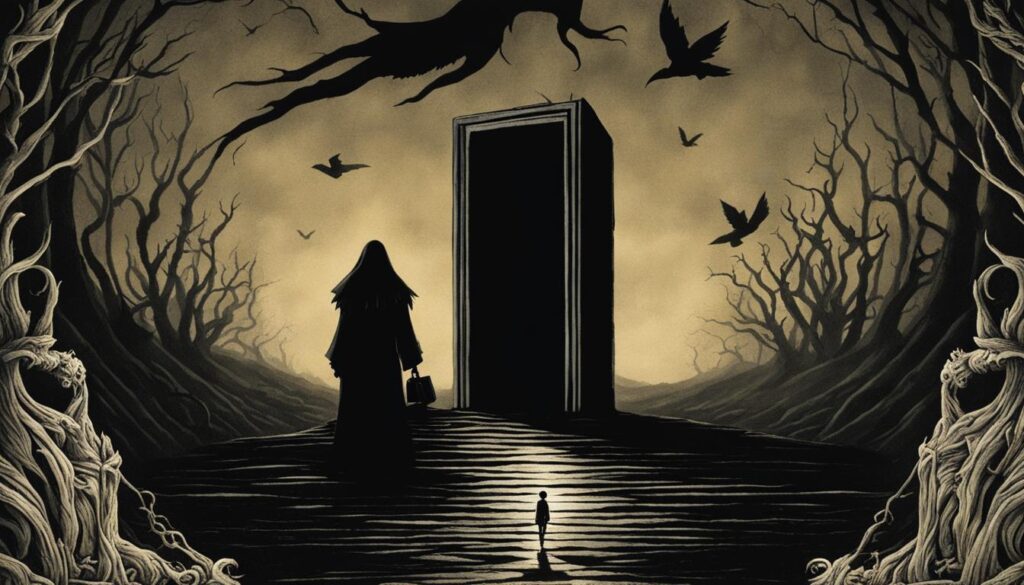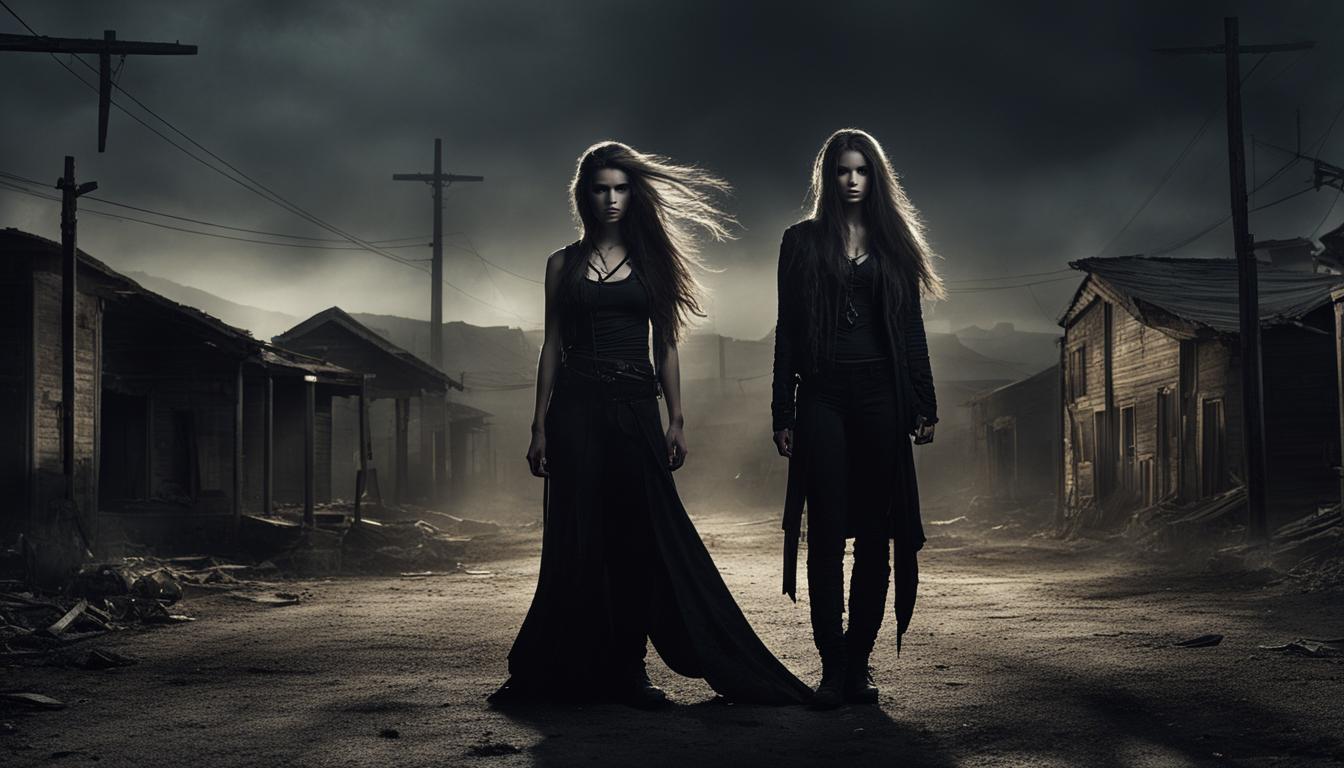Welcome, readers, to our in-depth analysis of one of Stephen King’s most captivating short stories, “Nona.”
In this article, we will explore the intricate details that make “Nona” a true masterpiece of the horror genre. From the plot and characters to the atmospheric tension and unique narrative technique, we will provide a comprehensive and insightful commentary on this gripping tale.
So, buckle up and get ready to dive into the dark and chilling world of “Nona” by Stephen King.
Introduction to “Nona”
Stephen King’s “Nona” is a riveting short story that captures the reader’s attention from the very first page. Set in a small town in Maine, the story follows a young boy named Todd Bowden who discovers that his elderly neighbor is a former Nazi war criminal.
The plot of “Nona” is layered and nuanced, with multiple twists and turns that keep the reader guessing until the very end. The setting of the story adds an eerie and unsettling atmosphere, with the quaint town acting as a facade for the dark and sinister secrets hidden within.
The central characters of “Nona” are expertly crafted and fully developed, with each character serving a crucial role in the overall narrative. Todd Bowden, the protagonist, undergoes a transformation throughout the story, as his curiosity turns to obsession and eventually leads to his downfall. Nona, the mysterious and enigmatic elderly neighbor, brings an element of mystique and intrigue to the story.
This introduction lays the foundation for a deeper exploration of “Nona,” and in the following sections, we will delve into the elements that make this story such a captivating masterpiece.
Stephen King’s Writing Style
Stephen King’s writing style is unique and unmistakable, and it is no different in his short story “Nona.” King is known for his mastery of suspenseful storytelling, using vivid imagery and atmospheric description to transport readers into his worlds. He is also a master of character development, allowing his readers to fully immerse themselves in the minds and emotions of his characters.
In “Nona,” King employs several writing techniques that contribute to its haunting impact. For example, he uses foreshadowing to build tension, hinting at the supernatural forces that lurk in the shadows and threaten Nona’s safety throughout the story. Additionally, his use of short, snappy sentences and paragraphs creates a sense of urgency, propelling the plot forward and keeping readers on the edge of their seats.
King’s writing is also heavily influenced by his love of classic horror films and literature. He has cited writers such as Edgar Allan Poe and H.P. Lovecraft as major influences on his work, and his writing often contains nods to these legendary horror masters.
Overall, Stephen King’s unique blend of suspense, atmosphere, and character development has helped make him one of the most respected and beloved authors of the horror genre. His writing style is a true talent and a major reason why his stories have captivated readers for decades.
Themes and Symbolism in “Nona”
Stephen King is known for weaving complex themes and symbolism into his stories, and “Nona” is no exception. One of the central themes in the story is the idea of the corrupting influence of power. We see this in the character of Nona, who becomes increasingly obsessed with the power she wields over the other children in the story.
Another prevalent theme is the nature of evil and the darkness that resides within us all. This is embodied in the malevolent forces that Nona encounters throughout the narrative, which serve as a reminder of the darkness that lurks within our own hearts.

The use of symbolism is also a key feature of “Nona.” One example is the use of color, with red symbolizing desire and power, while black represents fear and the unknown. The use of the number three is another prominent example of symbolism in the story, with the three witches serving as a powerful representation of the forces of darkness.
Overall, the use of themes and symbolism in “Nona” heightens the sense of unease and dread that permeates the story, making it a truly immersive and thought-provoking read.
The Protagonist: Nona
As the title suggests, “Nona” revolves around its eponymous protagonist. Nona is a young girl with a troubled past, living in a rundown apartment with her mother. Throughout the story, Nona’s fears and desires drive the narrative forward.
One of the central conflicts in the story is Nona’s struggle to reconcile her desire for companionship with her fear of being hurt. This tension is heightened by her encounters with the sinister forces that plague her daily life, making Nona a sympathetic and relatable character.
Despite her age, Nona displays remarkable resilience and inner strength. Her determination to overcome her obstacles adds depth to her character, making her more than just a victim or a passive observer to the events of the story.
The Anatomy of Nona’s Character
| Character Traits | Description |
|---|---|
| Courageous | Despite her fear, Nona is brave and determined. |
| Vulnerable | Nona’s difficult past and fragile emotional state make her susceptible to manipulation. |
| Lonely | Nona’s desire for companionship and her isolation from the world drive her decisions throughout the story. |
The complex interplay between Nona’s motivations, fears, and the external forces in her life make her a compelling and nuanced character. Through her experiences, readers are invited to reflect on their own struggles and resilience in the face of adversity.
The Antagonist: The Evil Forces
In Stephen King’s “Nona,” the central character, Nona, faces a series of evil forces, both internal and external.
The internal antagonist is Nona’s own fear and trauma, which manifests itself through her nightmares and hallucinations. As Nona grapples with her past trauma, her fear becomes her biggest adversary, threatening to consume her at every turn.
The external antagonist, on the other hand, is the darkness that lurks in the woods surrounding Nona’s home. King’s masterful use of setting imbues the forest with malevolent energy, creating a sense of foreboding and danger that pervades the entire story. As Nona ventures deeper into the forest, she encounters a variety of evil forces, including a monstrous bear and a shadowy figure that haunts her every step.
The Significance of the Antagonist
The evil forces in “Nona” serve as a powerful symbol of the darkness that resides within us all. They represent the irrational fears, doubts, and traumas that can overwhelm and control us if left unchecked. By pitting Nona against these forces, King prompts us to confront our own inner demons and find the strength to overcome them.
The Atmosphere: Building Tension
One of the defining features of Stephen King’s “Nona” is the bone-chilling atmosphere that permeates throughout the entire story. From the very beginning, King masterfully sets the tone and mood, introducing readers to a world of darkness and uncertainty. The setting of the story is critical in building tension and creating an unsettling ambiance. The tale unfolds in a remote cabin in the woods, adding an air of isolation to the narrative. The cabin, littered with ominous symbols and oddities, gives the reader a sense of unease, as if something is lurking in the shadows. King’s use of detailed imagery and vivid descriptions immerses the reader in the story, making them feel as though they are experiencing the events firsthand.
The mood in “Nona” is palpable and electrifying, something that King has mastered throughout his extensive career. He expertly weaves emotions of fear, apprehension, and dread throughout the story, never easing the reader’s unease. Every sentence has a purpose, building the tension and leading the reader towards the heart-pounding climax.
“The sky over the cabin was still a deep, starless black, and the lack of any reflection made the pond seem bottomless, a body without organs. Frank imagined something living down there, moving with slow, dreamlike strokes.”
The Building Blocks of Atmosphere
| Element | Description |
|---|---|
| Setting | The remote cabin in the woods adds an air of isolation to the story, building tension and unease in the reader. |
| Mood | The palpable sense of fear, apprehension, and dread electrifies the story, pulling the reader into the narrative. |
| Imagery | King’s use of detailed imagery and vivid descriptions immerses the reader in the story, making them feel as though they are experiencing the events themselves. |
The combination of these building blocks creates an atmosphere that grips the reader, never letting go. Stephen King proves time and time again that he is the master of building tension, and “Nona” is no exception.
Narrative Technique: A Masterful Approach
Stephen King is a master of storytelling, and Nona is no exception. In this section, we’ll take a closer look at the narrative techniques King employs to keep readers on the edge of their seats.
Point of View
One of the most effective storytelling devices used in Nona is the point of view. King writes the story from Nona’s perspective, allowing readers to experience the plot as she does. This technique draws readers into Nona’s world and immerses them in her struggle against the evil forces that she encounters.
Pacing
King’s pacing is another element that makes Nona a gripping read. He skillfully builds and releases tension throughout the story, maintaining the reader’s interest without overwhelming them. The story’s pace puts readers in sync with Nona’s journey and heightens the impact of the story’s resolution.
Imagery
King’s use of imagery is also notable in Nona. He employs vivid descriptions and sensory details to create an atmosphere of intrigue and suspense. The imagery draws the reader into the story and envelops them in the experience.
King’s narrative technique in Nona showcases his mastery of storytelling and solidifies his reputation as one of the most influential writers of our time.
Influences and Inspirations
Stephen King is known for his artful writing, weaving stories that captivate readers and leave lasting impressions. It is no different with his short story “Nona.” Like many of King’s works, “Nona” draws inspiration from a range of sources, both real and imagined.
One clear influence on “Nona” is King’s own life experiences. King grew up in impoverished conditions in Maine, and many of his stories draw from his difficult childhood. “Nona” is no exception, as it centers around poverty and desperation, with Nona’s family struggling to make ends meet in a trailer park.
King is also known for paying homage to other works of literature through his writing, and “Nona” is no different. King has mentioned Edgar Allan Poe as one of his greatest inspirations, and it shows in “Nona’s” haunting and atmospheric tone.
Another potential influence on “Nona” is Shirley Jackson’s “The Lottery,” a short story focused on a small town’s chilling ritual. “The Lottery” explores themes of tradition, society, and conformity, much like “Nona.” The two stories share similarities in tone, symbolism, and theme, leading some to speculate that King was inspired by Jackson’s work.
Overall, “Nona” is a masterful work that showcases Stephen King’s skill and creativity. The influences and inspirations behind the story are varied, but they all work together to create a compelling and unforgettable narrative.
Impact and Legacy of “Nona”
Stephen King has carved his place in the horror genre as one of the most influential and prolific writers. “Nona” is yet another masterpiece that contributed to his legacy. The short story has left an indelible mark in King’s body of work and the horror genre at large.
The critical reception of “Nona” has been overwhelmingly positive, with many praising the story’s ability to evoke fear and suspense in such a short length. The story has also been credited for its unique approach to character development and the crafty use of symbolism to depict the struggle between good and evil.
“Nona” continues to inspire and influence other writers in the horror genre. Its impact is evident in the works of modern horror writers such as Josh Malerman and Paul Tremblay. The story’s legacy lives on and will continue to do so for generations to come.

The Significance of “Nona” within King’s Body of Work
“Nona” showcases Stephen King’s ability to weave a powerful and gripping tale in a concise format. The story serves as an excellent example of King’s range and versatility as a writer. The unique approach to character development and the sinister antagonists in the story further highlight King’s exceptional storytelling abilities.
Moreover, “Nona” is a testament to King’s inventive use of symbolism to enhance the overall reading experience. The story’s themes of good versus evil, redemption, and the power of faith are woven into a chilling narrative that leaves a lasting impact on readers.
The Broader Influence of “Nona” in the Horror Genre
“Nona” has generated considerable praise and admiration from the horror community, with modern writers citing it as an inspiration for their own works. The story’s contribution to the horror genre is undeniable, with its innovative use of characterization and symbolism setting a standard for horror writing.
The story’s legacy has been further cemented by its inclusion in numerous horror anthologies and collections. Its influence on other horror writers is a testament to King’s status as a true master of the genre.
Exploring Stephen King’s Works
Stephen King is a prolific writer with a vast body of work ranging from novels to short stories. He has been writing for decades and has become a literary icon known for his imaginative and often terrifying tales. Beyond “Nona,” there are many other notable works in his collection that are worth exploring.
Novels
King’s novels are often lengthy and intricate, with complex plotlines and memorable characters. Many of his works have been adapted into films and TV series, such as It, The Shining, and The Stand. His novel Cujo tells the story of a rabid dog terrorizing a small town, and Pet Sematary explores the price of resurrection. Other notable novels include:
| Novel | Publication Year |
|---|---|
| The Dead Zone | 1979 |
| The Dark Tower Series | 1982-2004 |
| The Green Mile | 1996 |
Short Stories
King’s short stories are equally impressive, often packing a punch in just a few pages. Many of his tales are collected in anthologies, such as Night Shift and Skeleton Crew. In these stories, King explores a range of themes, from supernatural terror to everyday horrors. Some notable short stories include:
- The Mist
- 1408
- The Raft
Stephen King’s works have had a significant impact on popular culture and the horror genre. His unique style and approach to storytelling continue to captivate readers and inspire writers. If you’re a fan of “Nona,” make sure to explore King’s other works to experience the breadth and depth of his talent.
Conclusion
In conclusion, “Nona” is a compelling short story written by the master of horror himself, Stephen King. Through our exploration, we have uncovered the intricacies of the plot, setting, and the central characters that make this story so captivating. King’s unique writing style, use of suspense, and atmospheric elements contribute to the overall impact of the narrative.
Furthermore, we’ve analyzed the themes and symbolism present in “Nona,” providing a deeper insight into the story’s meaning. The protagonist, Nona, and the antagonistic forces she faces, are well-developed characters that drive the plot forward. The narrative technique employed by King is masterful, with the use of point of view and pacing enhancing the reader’s experience.
Finally, we’ve examined the impact and lasting legacy of “Nona” within Stephen King’s body of work and the broader horror genre. Its critical reception and influence on other writers are a testament to its significance. We invite readers to experience “Nona” for themselves and further explore Stephen King’s extensive body of work.



